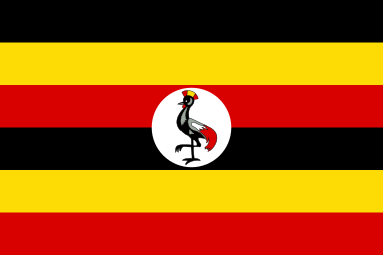Forests and woodlands
The National Biomass Studies carried out in the late 1990’s and early 2000’s, and published in 2003, is the most comprehensive analysis of land use in Uganda (FAO, 1996). Uganda has a total area of 24,155,058 hectares, of which farmland (35%) is the most extensive land use. Generally, forest vegetation cover in Uganda and Busia district varies. These include Tropical High Forests (THF), Savanna woodland, Savanna grassland, wetland forests and bush or scrublands. A network of these vegetation types in Uganda is classified as Central Forest Reserves (CFRs), Game Reserves or National Parks and are managed by Uganda Wildlife Authority (UWA) or the National Forest Authority (NFA) and serve to conserve a significant proportion of biodiversity. In Uganda, forests and woodlands cover a total of 4.9 million hectares, which is about 24% of the total land area. In this report we use the term tropical forests to mean all forests occurring between the Tropic of Capricorn and the Tropic of Cancer, regardless of altitude or forest type (Winterbottom & Eilu 2006). Under this classification, all forests in Uganda, and therefore Busia Municipality could be regarded as tropical.
Forest Ownership
Ownership of forest resources is split between the government and private sectors. The government holds the country’s Permanent Forest Estate, defined in the Forestry Policy (2001) as land that is set aside for forestry activities in perpetuity for Ugandans. It consists of some 1.9 million hectares, representing about 10 percent of the total land area of Uganda. According to the Policy, this is the minimum area that the Government of Uganda has committed itself to keep as forestland permanently.
The graph below shows percentage of ownership of forests in Uganda
- Private64
- CFR19
- DJM &LFR1
Adopted from National biomass report 2005.
Busia district has 3 central Forest reserves: Western Bugwe, Monikakinei and Sitambogo CFRs and one Local forest reserve i.e., Masafu LFR. Neither of these is in the municipality boundaries. However, for purposes of this analysis, in Busia Municipality tropical forest is used to mean all humid lowland and broadleaf forests. Natural forests within the Municipality exist as groups of broad-leaved trees and/ shrubs mainly on private land (Plate 1). None of the current existing Natural Forest vegetation in the Municipality is protected. All Tropical Natural forests in these areas can be classified as degraded or highly degraded and exist as pockets of trees left mainly on private land. The remaining groups of trees will certainly be cleared or further degraded as the demand for residential, fertile agricultural soils and the need for social and infrastructure development increases in the area. A robust strategy, therefore, is needed to sustain and increase natural forests or tree vegetation cover in the Municipality. In addition, a couple of pure and mixed plantations mainly of Pinus spp (Plate 2) below., Araucaria sp., Eucalyptus spp. Plate 3 below, Grevera sp. and Terminalia spp. were observed mostly on private land. In areas of Solo A, Solo C, Nangwe Madibira A, Mugungu Solo B, Mawero East B, Madibira B, Kisenyi A. Due to the nature of land tenure-ship on which these forests exist, combined with the growing population and scarcity of land for housing and agriculture, the forest cover in BMC could be completely lost within the next three to five decades



